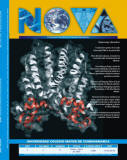NOVA por http://www.unicolmayor.edu.co/publicaciones/index.php/nova se distribuye bajo una licencia Reconocimiento No Comercial- Compartir igual
Así mismo, los autores mantienen sus derechos de propiedad intelectual sobre los artículos,
Declaración de privacidad.
Los nombres y las direcciones de correo electrónico introducidos en esta revista se usarán exclusivamente para los fines establecidos en ella y no se proporcionarán a terceros o para su uso con otros fines.
Behaviour and Prognostic Value of Serum Cardiac Troponin I in Patients with End-Stage Renal Disease Undergoing Long-Term Haemodialysis. A Five-Year Outcome Analysis
Quantitative cardiac troponin I was measured with an AxSYM cTnI micro-particle enzyme immuno-assay and qualitative cTnI with a Hexagon Troponin immuno-chromatographic one-step test. It did not prove possible to detect any significant association between pre- and post-dialysis cTnI levels.
Comparison of results for serum and heparin plasma revealed no statistically significant difference between the level of cTnI and the mean values for plasma and serum with and without the addition of HBR. The cTnI concentrations in the samples without added HBR were lower than in those with HBR, but no statistically significant difference between the mean for cTnI and the mean of samples with and without added HBR was observed. During the study, 35.2% of the population died. A positive association was observed between the cTnI values in the patients still living and those patients who died from ischaemic cardiomyopathy (p = 0.039).
The crude risk of death by cardiovascular disease was increased eight-fold (the 95% confidence interval being 1.2 to 51.1) in patients with a cTnI concentration greater than 0.04 ng/mL. Levels of cTnI may reflect occult
myocardial ischemia and identify haemodialysis patients who face a greater risk of death.









